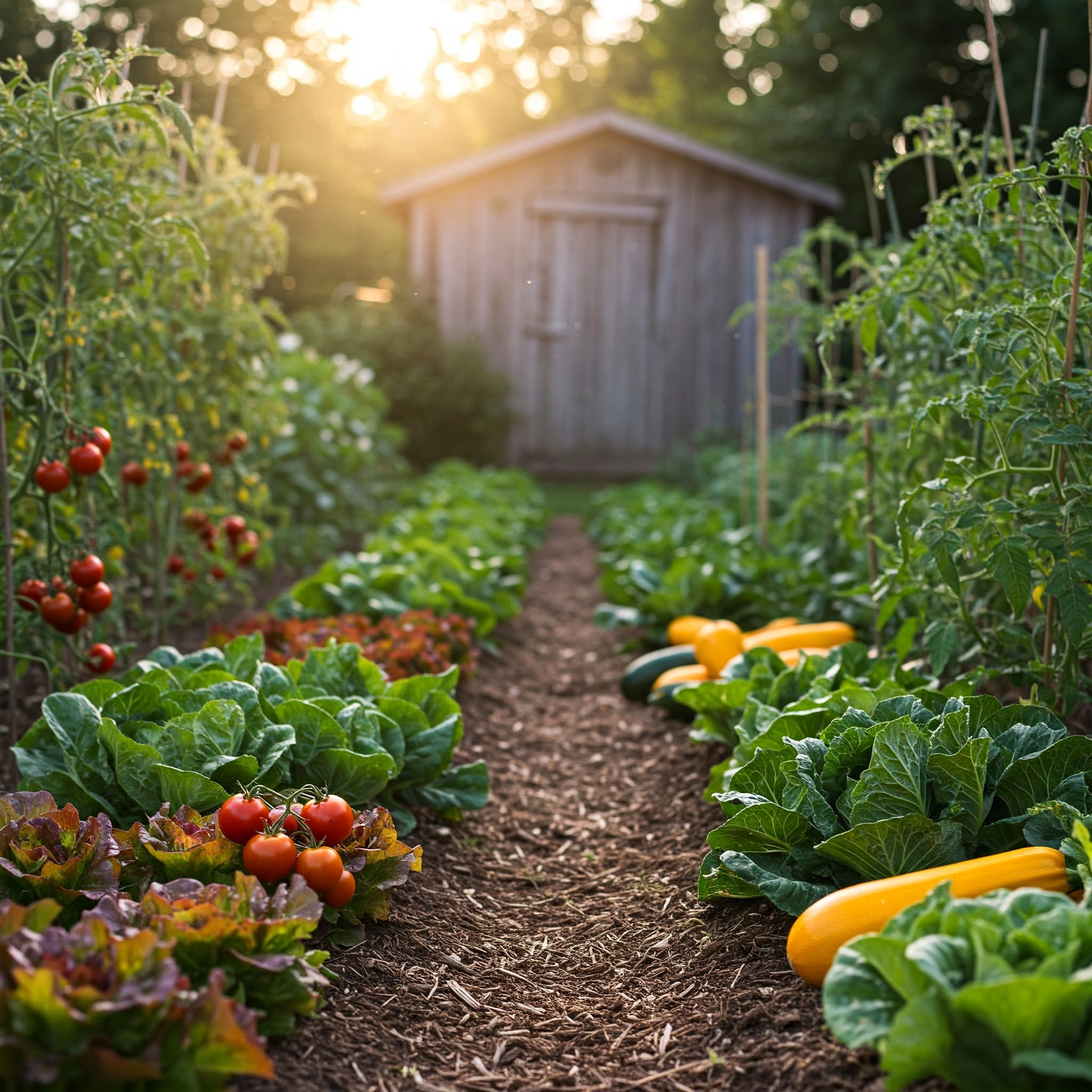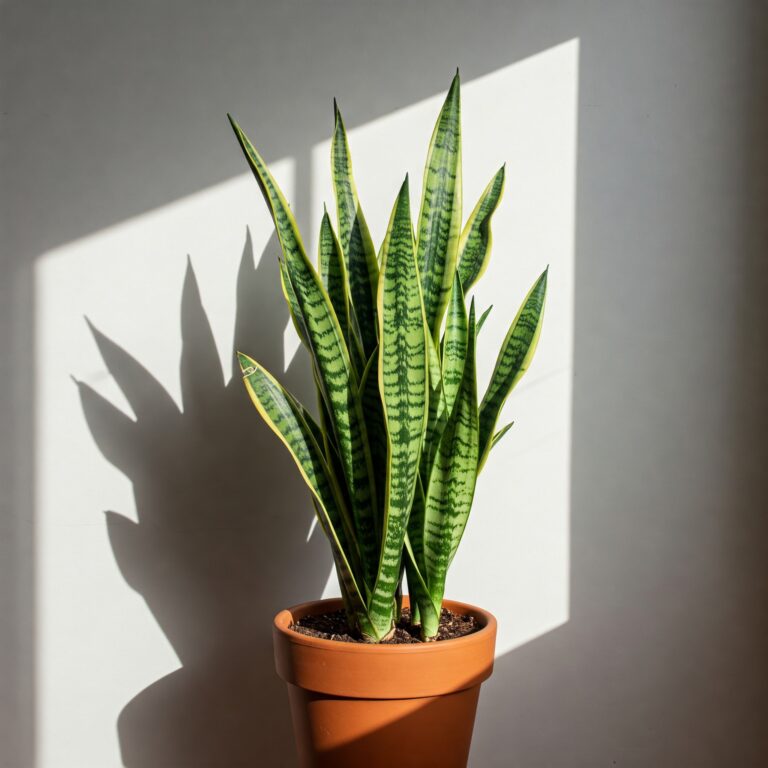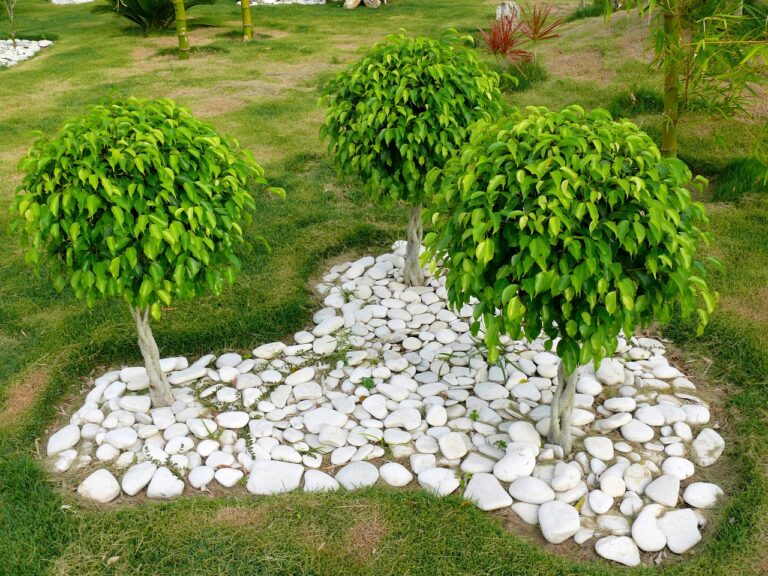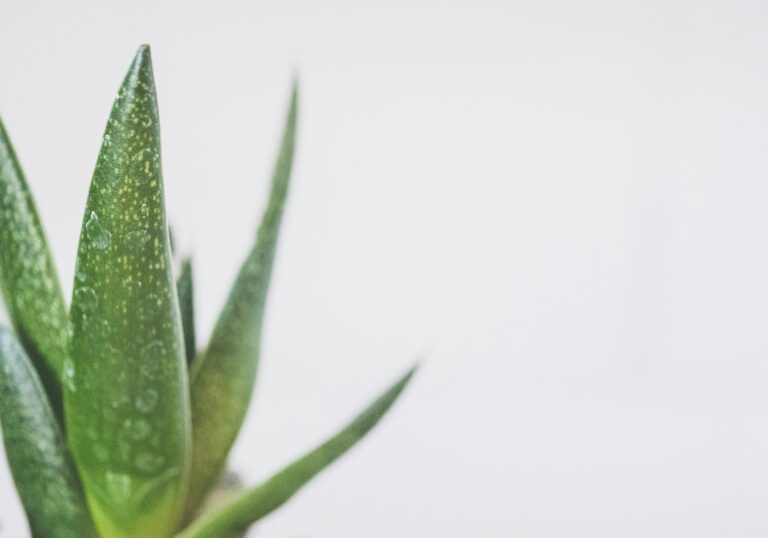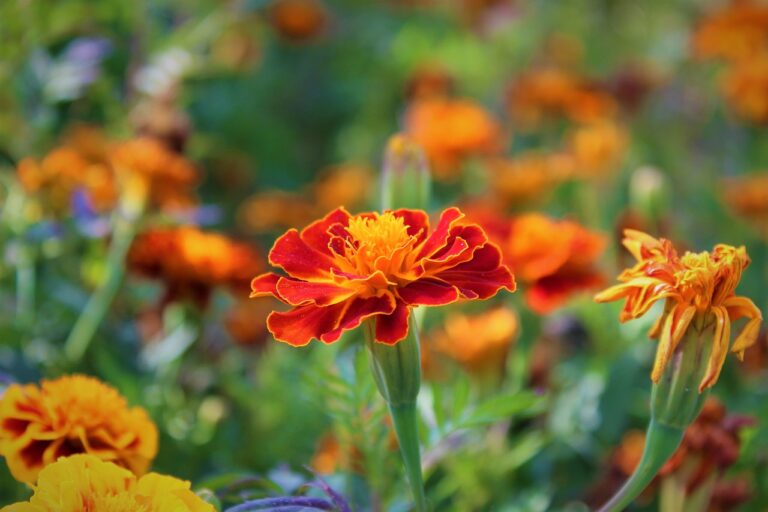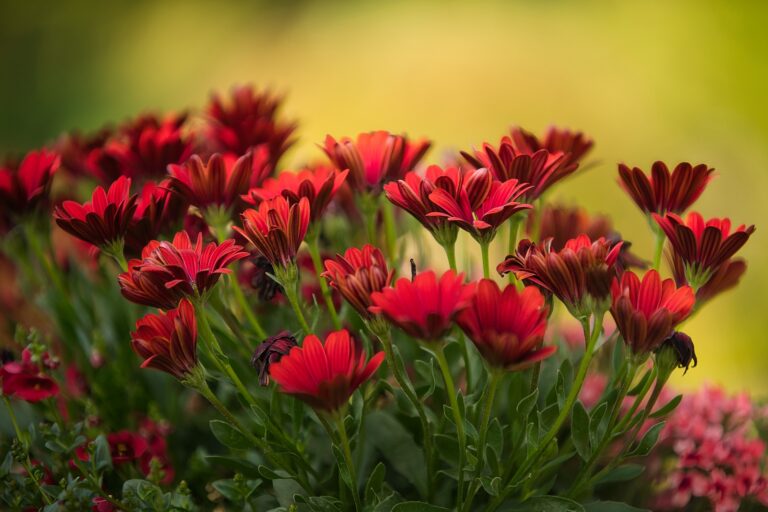Have you always wanted to grow your own garden but didn’t know where to start? You’re in the right place! Gardening is a rewarding hobby that not only provides fresh produce but also promotes mental well-being and beautifies your space. Whether you have a spacious backyard or a small balcony, starting a garden can be a fulfilling journey.
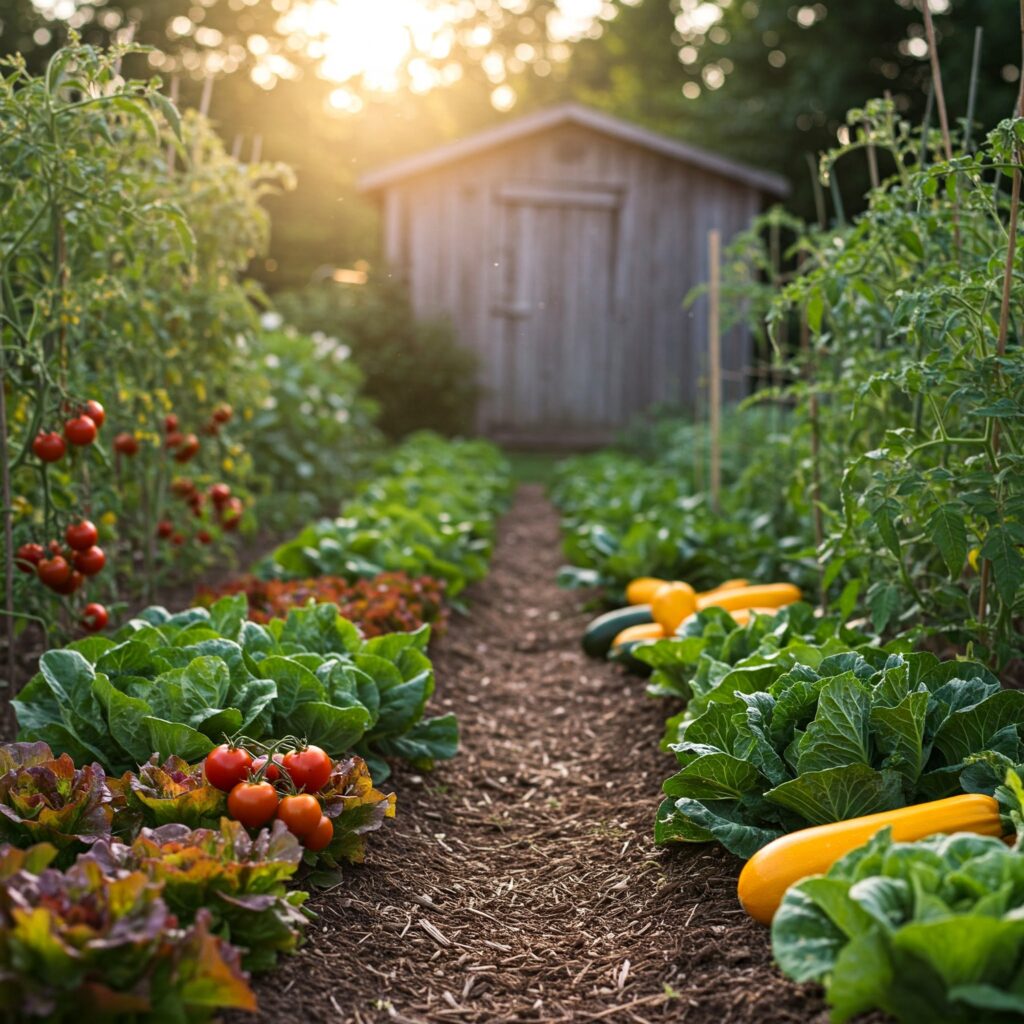
This guide will walk you through the process step by step, covering everything from selecting the right spot to harvesting your crops. If you’re wondering how to start a garden for beginners, read on to cultivate your green thumb.
Why Start a Garden?
Gardening offers numerous benefits, making it an appealing hobby for people of all ages. One of the most significant advantages is the ability to grow your own food. By cultivating fruits, vegetables, and herbs, you can save money on grocery bills and enjoy fresh, chemical-free produce right from your backyard. Homegrown food often tastes better and contains more nutrients because it is harvested at its peak.
In addition to the physical benefits, gardening has profound effects on mental health. It is a therapeutic activity that helps reduce stress, anxiety, and depression. The act of nurturing plants, watching them grow, and connecting with nature fosters a sense of accomplishment and relaxation. Spending time outdoors also boosts mood and provides a break from the digital world.
Moreover, a well-maintained garden enhances the aesthetic appeal of your surroundings. Whether it’s a colorful flower bed or a neatly arranged vegetable patch, gardens add beauty, texture, and vibrancy to any space. They create a peaceful environment, attracting birds, butterflies, and other wildlife, contributing to a richer outdoor experience.
Steps to start a garden for beginners
Step 1: Choose the Right Location
Selecting the perfect spot is crucial for a successful garden. The location you choose will directly impact your plants’ growth and productivity. One of the most important factors to consider is sunlight. Most vegetables and flowers require 6-8 hours of direct sunlight daily to thrive. Observe your outdoor space throughout the day to identify areas with ample sunlight exposure.
Another key factor is soil drainage. Plants need well-draining soil to prevent water from pooling around their roots, which can lead to root rot and other issues. After heavy rain, check the area to see how quickly water drains away. Avoid spots where water tends to collect and remain stagnant.
Proximity to a water source is also essential. Having easy access to water will make it more convenient to maintain consistent watering routines, especially during dry spells. Additionally, consider the garden’s visibility and accessibility. A garden close to your home will be easier to tend to and less likely to be neglected.
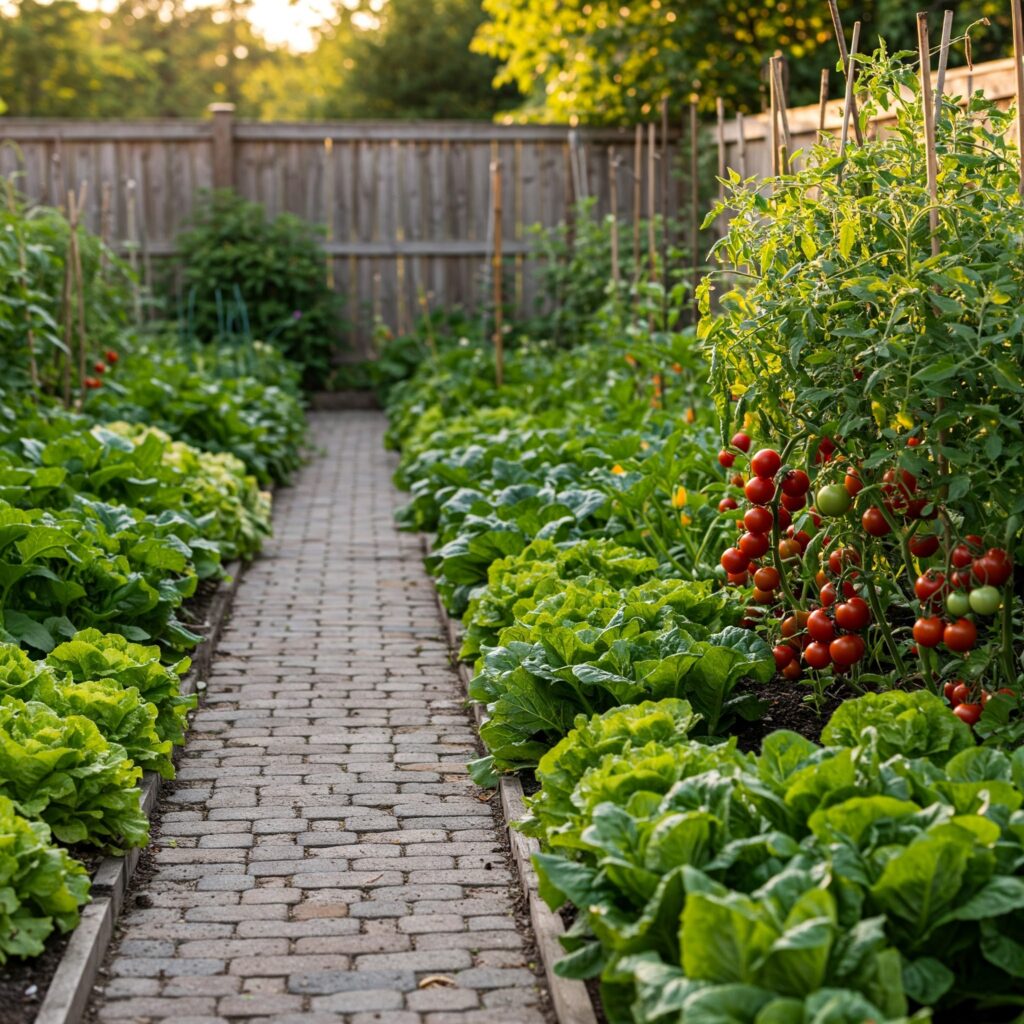
For those with limited space, container gardening or vertical gardens are excellent options. Container gardening allows you to grow plants in pots, which can be placed on patios, balconies, or windowsills. Vertical gardens maximize vertical space using shelves, trellises, or hanging planters, making them ideal for urban environments.
Step 2: Decide What to Grow
Choosing the right plants is essential for beginner gardeners. When deciding what to grow, consider your personal preferences, climate, and the time you can dedicate to gardening. Starting with easy-to-grow plants increases your chances of success and builds your confidence.
Vegetables like tomatoes, lettuce, and peppers are popular choices for beginners because they are hardy and produce abundant yields. Tomatoes come in various sizes and flavors, and they thrive in containers or garden beds with plenty of sunlight. Lettuce grows quickly and can be harvested multiple times in a season, providing a continuous supply of fresh greens. Peppers are versatile, adding flavor and color to dishes, and they flourish in warm conditions.
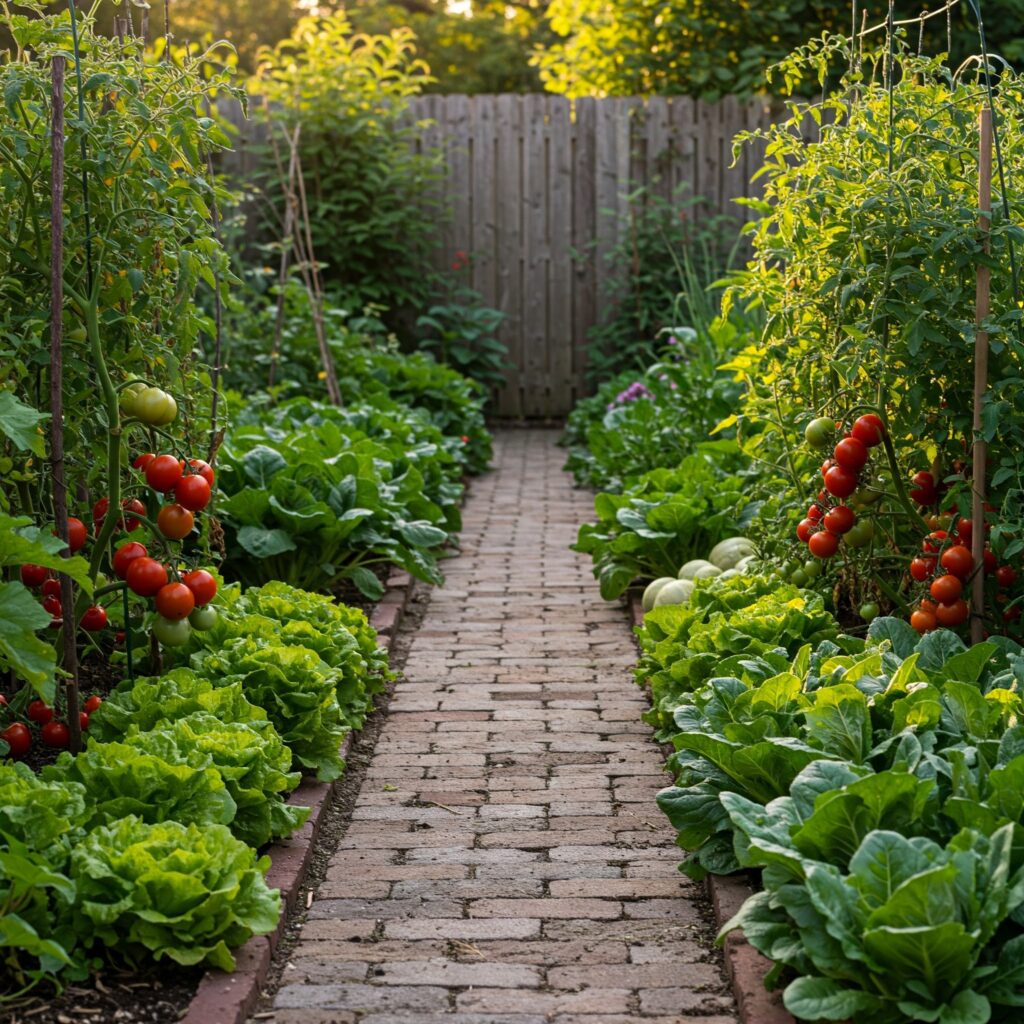
Herbs are another excellent option for new gardeners. Basil, mint, and parsley are low-maintenance and grow well in small spaces, including windowsills and containers. They require minimal care and can be harvested regularly, adding fresh flavors to your meals.
If you prefer flowers, consider planting marigolds, sunflowers, and zinnias. Marigolds are hardy, pest-resistant, and brighten up any garden with their vibrant hues. Sunflowers are easy to grow and make a stunning statement with their tall stalks and large blooms. Zinnias are colorful, drought-tolerant, and attract pollinators, enhancing the health of your garden ecosystem.
When selecting plants, also consider your local climate and growing season. Research which plants thrive in your region and consult local garden centers for advice. Starting with plants suited to your environment will reduce the risk of failure and increase your gardening success.
Step 3: Prepare the Soil
Good soil is the foundation of a healthy garden. Plants derive their nutrients from the soil, so preparing it properly is crucial for robust growth. Start by testing your soil’s pH and nutrient levels using a soil testing kit, available at most garden centers. This will help you determine if any amendments are needed to optimize soil conditions.
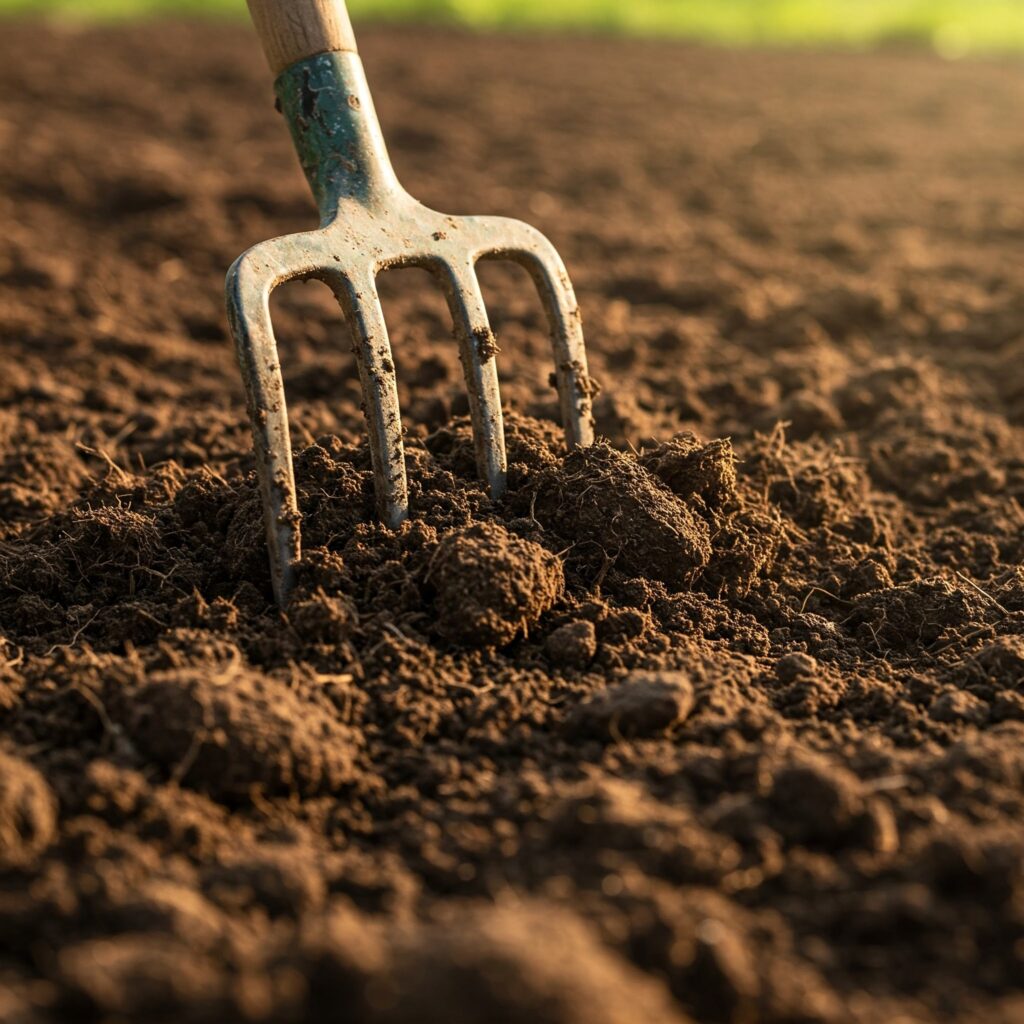
Adding organic matter such as compost, aged manure, or leaf mold improves soil structure, fertility, and drainage. Compost enriches the soil with essential nutrients and beneficial microorganisms that support plant health. If your soil is heavy clay or sandy, amending it with organic matter can enhance its ability to retain moisture and nutrients.
In areas with poor soil quality, consider using raised beds or containers. Raised beds allow you to control the soil composition, drainage, and structure, creating an ideal environment for plant roots. Containers offer similar benefits and are especially useful for small spaces or urban settings. They also reduce the risk of soil-borne diseases and pests.
Regularly adding organic matter and rotating crops each season helps maintain soil health, ensuring your garden remains productive year after year.
Step 4: Gather Essential Gardening Tools
Having the right tools simplifies gardening tasks and makes the experience more enjoyable.
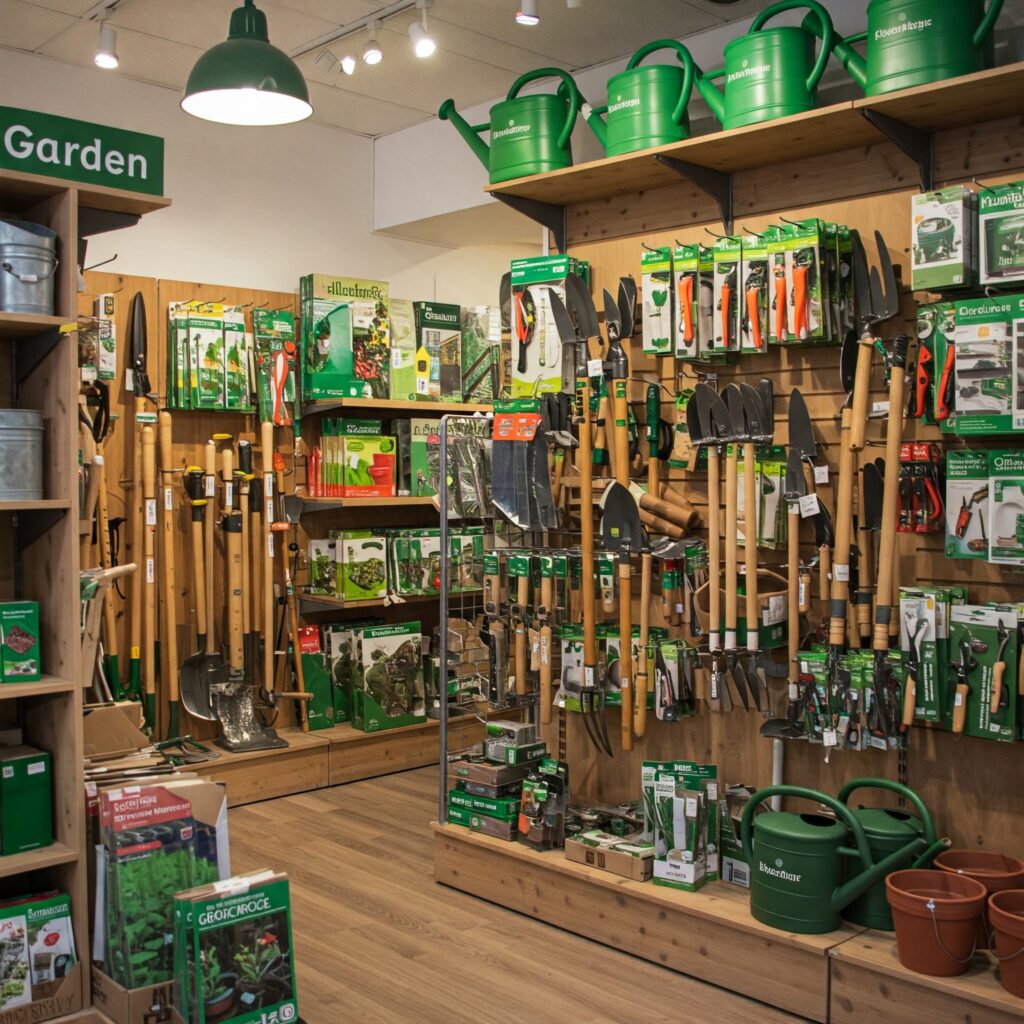
Here’s a list of essential gardening tools for beginners:
- Gloves: Protect your hands from dirt, thorns, and blisters while providing a better grip when handling tools.
- Trowel: A versatile tool for digging small holes, planting, and weeding. Look for a sturdy, comfortable design.
- Pruning Shears: Essential for trimming plants, removing dead growth, and encouraging healthy development.
- Watering Can or Hose: Ensures efficient watering. A watering can is ideal for small gardens, while a hose with an adjustable nozzle suits larger areas.
- Rake and Hoe: Useful for preparing soil, removing debris, and controlling weeds.
Investing in quality tools can make a significant difference, but affordable options are widely available for beginners. Start with the basics and expand your collection as needed.
Step 5: Plant Your Garden
Now comes the exciting part—planting! Here’s how to plant a garden for beginners:
Decide whether to start from seeds or purchase young plants (seedlings) from a nursery. Seeds offer a wider variety of plant choices and are cost-effective, while seedlings provide a head start and faster results.
When planting, follow the spacing guidelines on seed packets or plant labels. Proper spacing prevents overcrowding, promotes good air circulation, and reduces the risk of diseases. Ensure seeds are planted at the correct depth, as specified on the packaging. Planting too deep or too shallow can affect germination and growth.
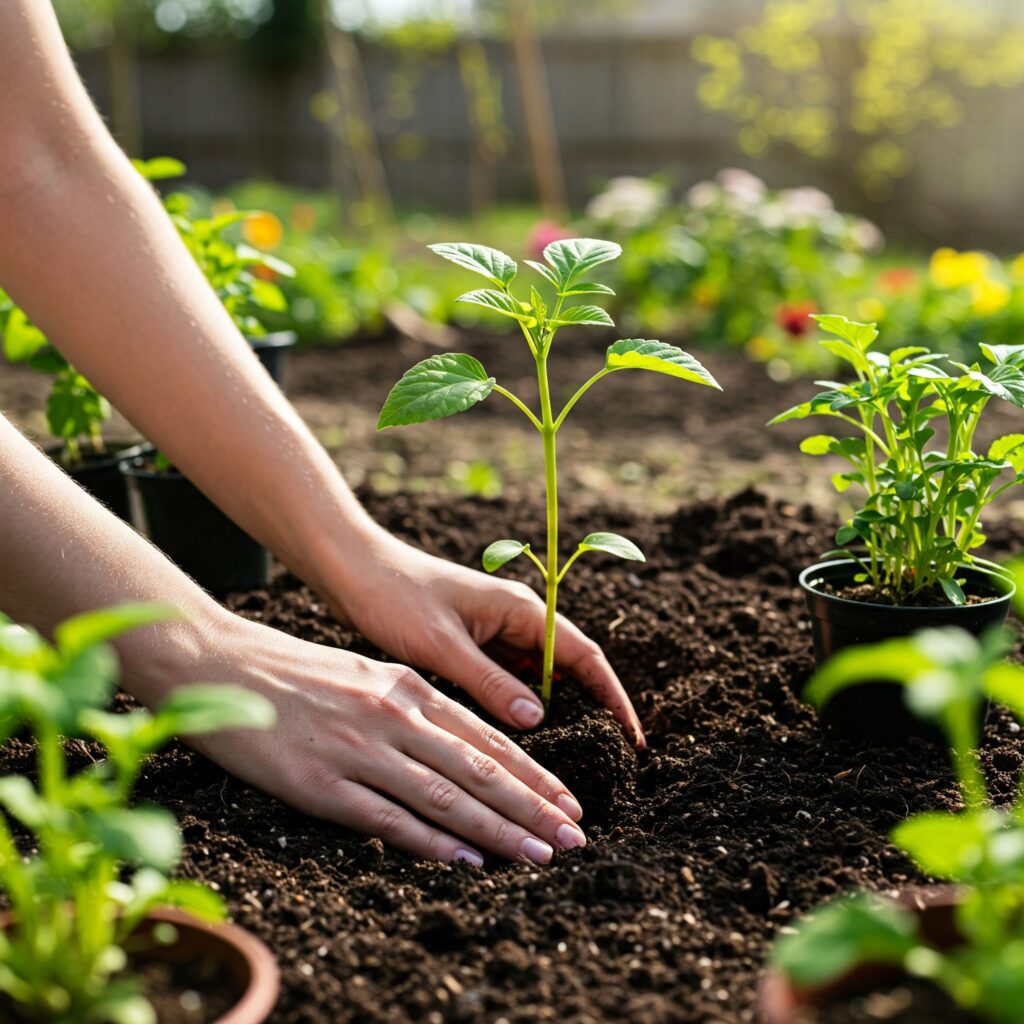
After planting, water the soil gently to settle it around the roots. Consistent moisture is essential during the initial stages of growth. For container gardening, choose pots with drainage holes to prevent waterlogging and ensure healthy root development.
Step 6: Water and Maintain Your Garden
Consistent care is key to a thriving garden. Here’s how to water a garden and maintain it effectively:
Water deeply but less frequently to encourage deep root growth. Shallow, frequent watering can lead to weak roots and plant stress. Early morning is the best time to water, as it reduces evaporation and allows plants to absorb moisture before the heat of the day.
Mulching is an effective technique to retain soil moisture, regulate temperature, and suppress weeds. Apply a layer of organic mulch, such as straw, wood chips, or leaves, around your plants. Mulch also adds nutrients to the soil as it decomposes.
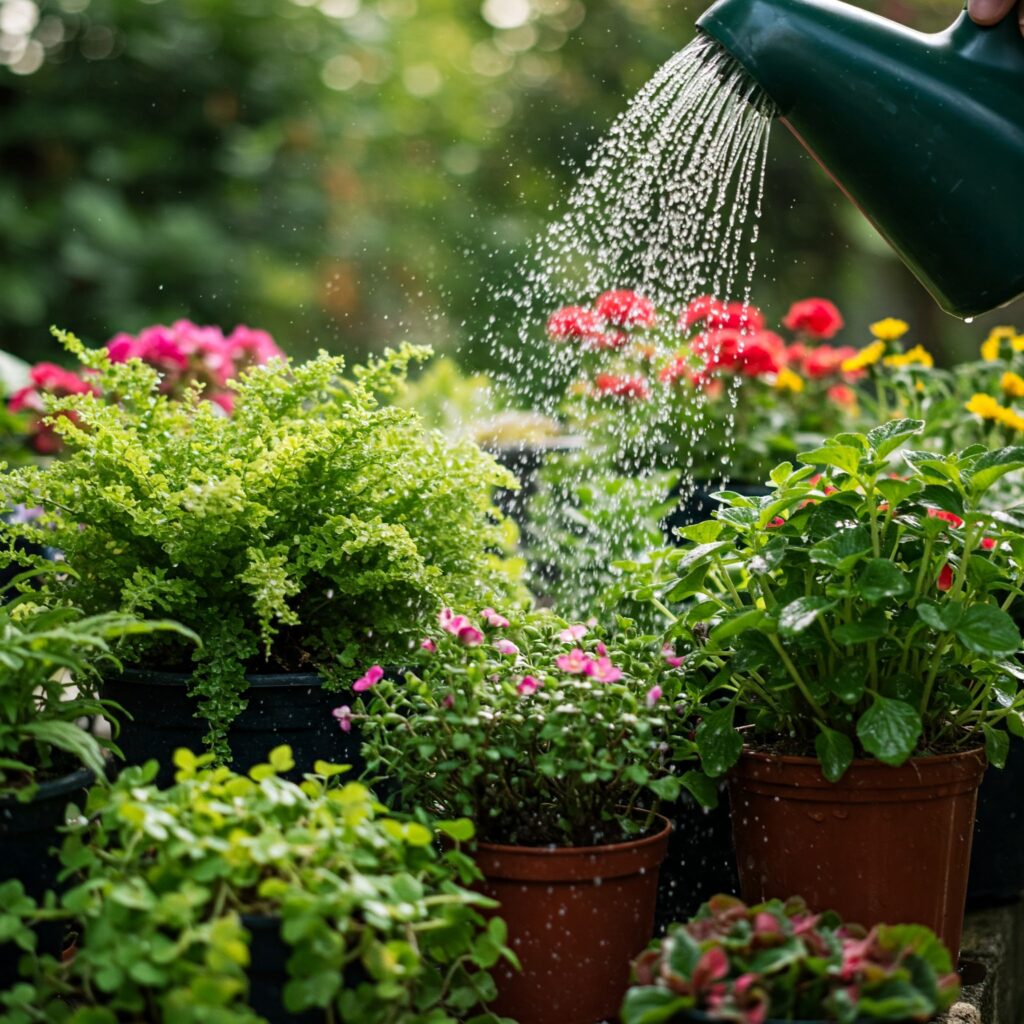
Regular maintenance includes weeding, monitoring for pests, and pruning. Weeds compete with your plants for nutrients and water, so remove them promptly. Check plants regularly for signs of pests or diseases and take appropriate action, such as using organic pest control methods or removing affected leaves.
Step 7: Harvest and Enjoy
The reward of gardening is the harvest. Here’s how to harvest vegetables and enjoy your garden’s bounty:
Knowing when to harvest is crucial. Observe changes in color, size, and texture to determine readiness. For example, tomatoes should be fully colored and slightly firm, while lettuce can be harvested when leaves are tender and full-sized.
Use clean, sharp tools to harvest, reducing the risk of damaging plants or spreading diseases. Harvesting in the morning is ideal, as plants are hydrated and cool, preserving their flavor and freshness.
Celebrate your gardening achievements and savor the fruits (and vegetables) of your labor. Share your harvest with friends and family, and consider preserving surplus produce through canning, drying, or freezing.
Common Mistakes to Avoid
Even seasoned gardeners make mistakes. Here are common gardening mistakes for beginners and how to avoid them:
- Overwatering or Underwatering: Understand the specific water needs of your plants. Too much water can cause root rot, while too little can lead to wilting and poor growth.
- Planting Too Close Together: Crowded plants compete for resources and are more susceptible to diseases. Follow recommended spacing guidelines.
- Ignoring Soil Quality: Poor soil leads to weak plants. Regularly amend your soil with compost and organic matter to maintain fertility.
Learning from mistakes is part of the gardening journey. Each season provides new opportunities to improve and refine your skills.
FAQs About Starting a Garden
1. How much time does gardening take?
Gardening time varies based on garden size and plant types. A small garden might require just 30 minutes a day, while larger gardens need more time for maintenance.
2. Can I start a garden without a yard?
Yes! Container gardening, vertical gardens, and indoor herb gardens are perfect for homes without yards. They are versatile, space-efficient, and easy to manage.
3. What’s the easiest plant to grow for beginners?
Herbs like basil and mint, or vegetables like radishes and lettuce, are easy and quick to grow. They require minimal care and provide quick, satisfying results.
Addressing these common questions helps beginners feel more confident as they start their gardening journey.
Conclusion
Starting a garden may seem daunting, but with the right steps, anyone can cultivate a beautiful, productive space. Remember to:
- Choose the right location.
- Select beginner-friendly plants.
- Prepare nutrient-rich soil.
- Plant carefully and maintain regularly.
Ready to start your gardening journey? Grab your tools, pick your plants, and get planting today. Enjoy the process, learn from each season, and watch your garden flourish!
